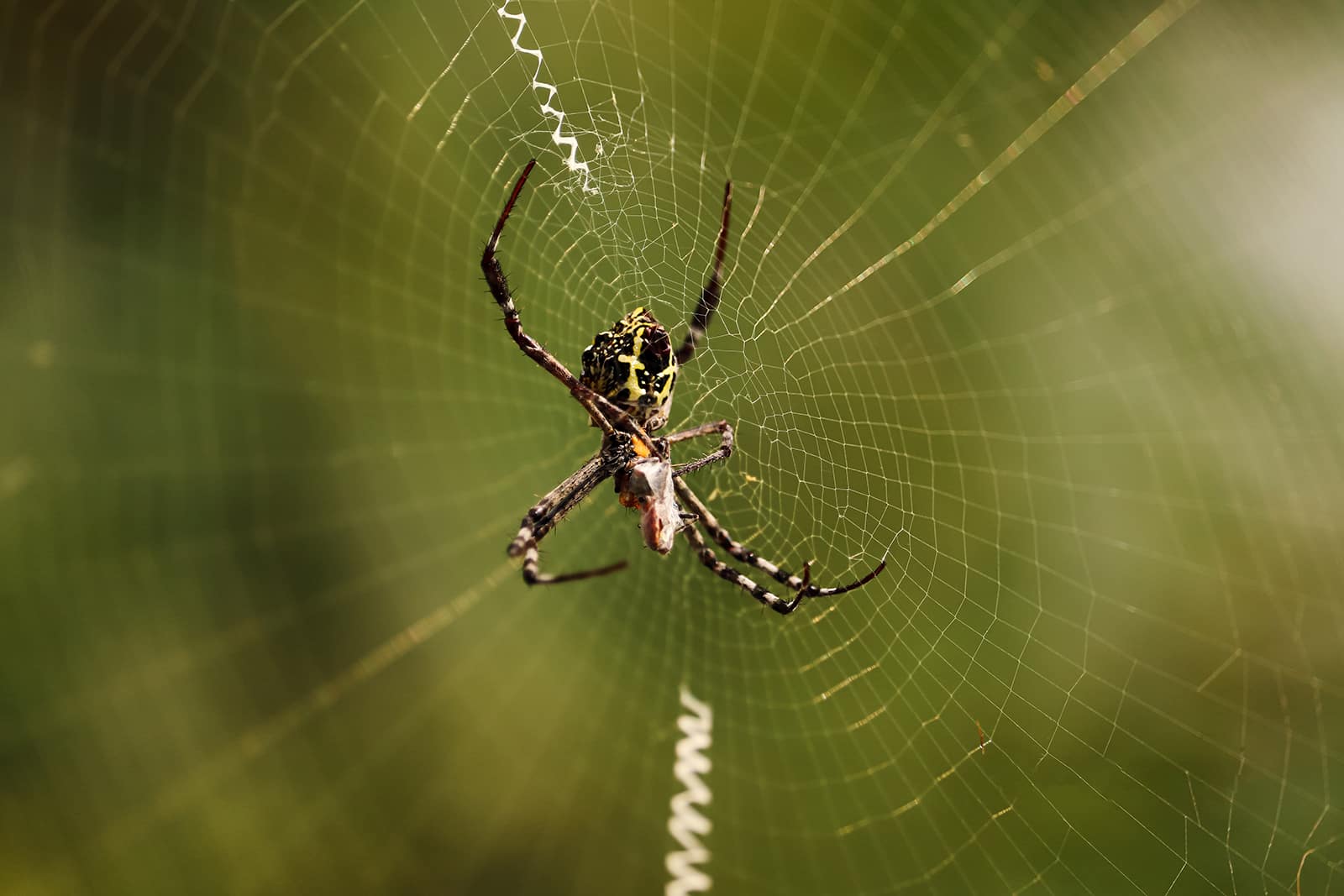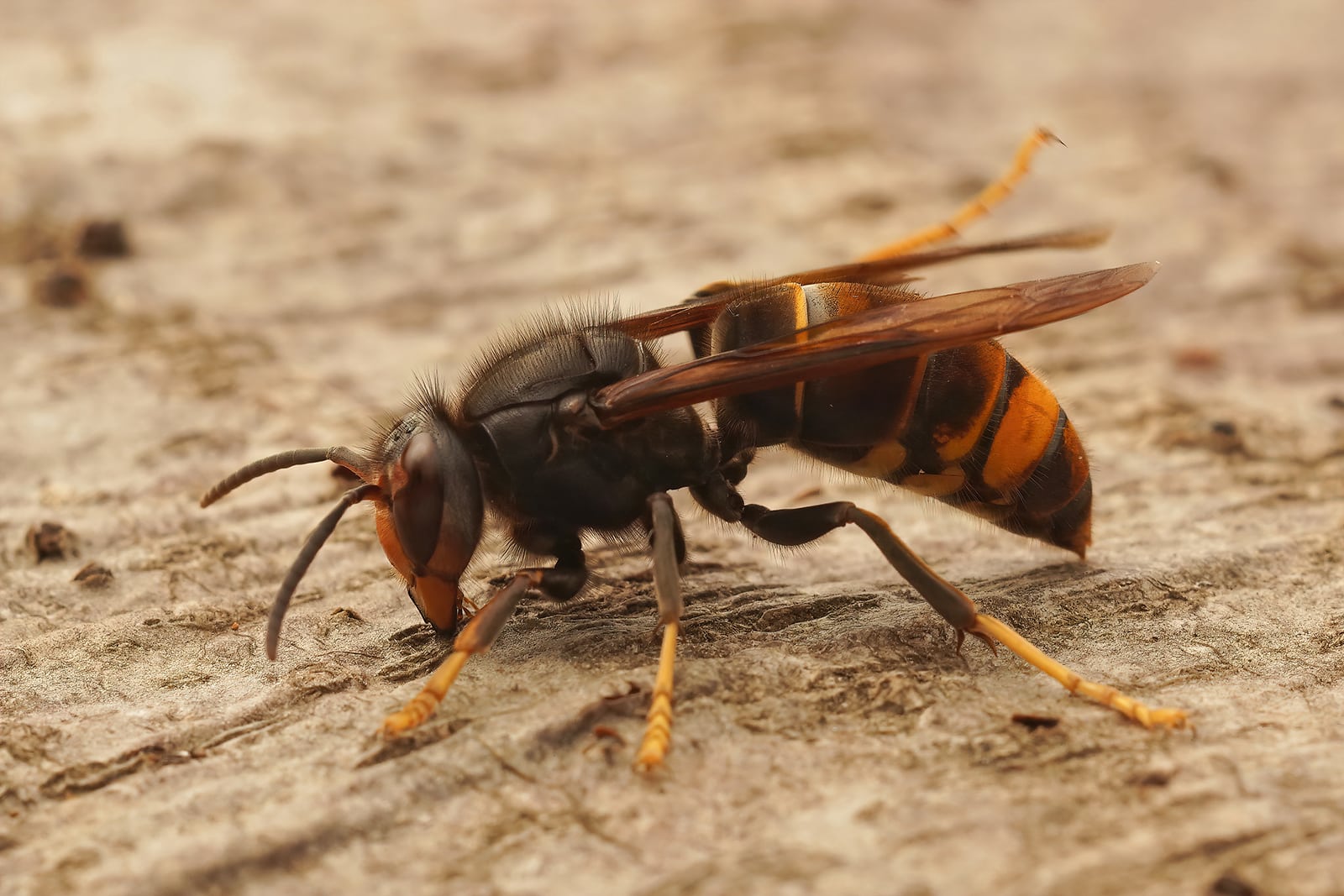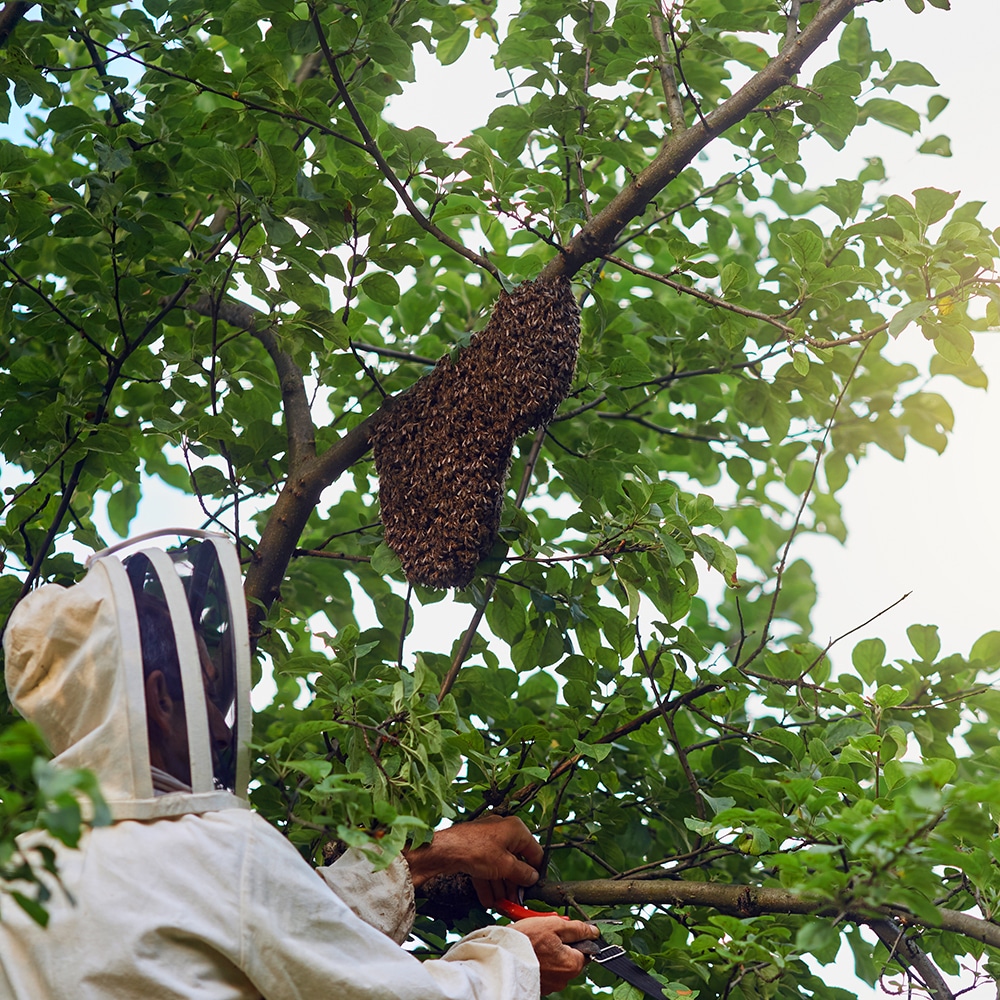
Why Do Spiders Come Back And Why
Why Do Spiders Come Back And Why On The Central Coast NSW. Responsive Proactive Solutions. Detail-focused for lasting results. Call Adam on 0431 222 894
Looking for the Best Wasp Traps and Baits for Effective Control on the Central Coast NSW? You’re in the right place. Our friends at Vital Pest Control offer reliable, detail-focused solutions.
How do wasp traps work?
Wasp traps lure pests using enticing baits. Once inside, wasps can’t escape. Effective traps reduce wasp populations, providing a proactive solution to potential infestations.
The best types of bait for different wasp species
Different wasps love different baits. European wasps prefer meat, while paper wasps go for sweet baits. Choosing the right bait enhances trap effectiveness and helps manage wasp invasions.
How to properly place wasp traps for maximum effectiveness
Proper placement is key. Hang traps away from human activity, ideally near wasp nests. This method ensures wasps focus on traps, not your barbecue.
Are store-bought wasp traps effective?
Store-bought traps can be effective. They offer convenience and consistent results. However, combining them with expert advice ensures the best outcomes in pest control.
How to make homemade wasp traps
To make a homemade trap, use a plastic bottle. Add bait and create a funnel entrance. Simple yet effective, this method provides a cost-effective solution.
Why sugar-based baits attract wasps
Sugar baits mimic nectar, a wasp favourite. This attraction makes them ideal for traps, ensuring wasps are drawn away from your outdoor spaces.
How to prevent wasp traps from attracting bees
Avoid honey or floral scents. These attract bees. Opt for meat baits to deter bees while still luring wasps.
Best wasp traps for commercial properties
For commercial spaces, professional traps provide peace of mind. They offer long-lasting results and keep your business environment wasp-free.
Ready to tackle wasp problems on the Central Coast NSW? Discover how we can help you today!

Wasp traps offer a practical solution for managing wasp populations, especially in Central Coast NSW, where these insects can become a nuisance. Understanding how these traps work is crucial for effective pest control. Traps function by attracting wasps with a lure or bait, then capturing them, reducing their numbers significantly.
The Lure Mechanism
Wasp traps use a bait that mimics the scent of food. This bait can be sugary or protein-based, depending on the wasp species. Once the wasps detect the scent, they’re drawn to the trap, mistaking it for a food source. The type of bait is crucial; using the right lure ensures maximum attraction and effectiveness.
Trap Design
Most wasp traps feature a funnel or narrow opening that allows wasps to enter easily but makes it difficult for them to escape. This design capitalises on the wasps’ natural behaviour, where they enter seeking food but struggle to exit due to the trap’s structure. The result is a growing collection of captured wasps.
Placement and Usage
Strategic placement enhances the trap’s efficiency. Positioning traps near wasp nests or areas with high wasp activity increases capture rates. Regular maintenance, such as replacing bait and emptying the trap, ensures ongoing effectiveness. Proper placement and upkeep are key to controlling wasp populations effectively.
When it comes to managing wasp populations, choosing the right bait is crucial. Different wasp species exhibit varied behaviours and preferences, so tailoring your approach can greatly enhance effectiveness. Vital Pest Control on the Central Coast NSW offers insights into selecting the best bait for these pesky insects.
European Wasps
European wasps are particularly attracted to protein-rich baits. A blend of raw meat or fish can lure them effectively. These wasps are aggressive and known for their painful stings, so using an enticing bait is essential for effective trapping. Ensure the bait remains fresh to maintain its appeal, especially during the warmer months when wasps are more active.
Paper Wasps
Paper wasps tend to favour sugary baits. A mixture of sugar water or fruit juice works wonders in attracting them. These wasps are less aggressive than their European counterparts, but they can still become a nuisance, especially around homes and gardens. Incorporating a sweet bait into your traps can help manage their numbers effectively.
Yellowjackets
Yellowjackets are drawn to both sugary and protein-rich baits. Combining fruit juice with a small amount of meat can create an irresistible lure. These wasps are often found near picnic areas and barbecues, making them a common problem during outdoor gatherings. Using a bait that combines both elements can help control their presence.
Vital Pest Control on the Central Coast NSW knows the importance of effectively placing wasp traps to keep your property safe. Proper placement can maximise the efficiency of these traps, ensuring a wasp-free environment. Understanding the best locations and methods for setting up traps can make a significant difference in wasp reduction.
Identifying Wasp Activity Areas
To begin, identify the areas where wasps are most active. Look for nests or spots where wasps frequently buzz around. These are usually near food sources or sheltered areas. Once you pinpoint these zones, you can strategically place the traps to intercept wasps before they become a nuisance.
Placing Traps at Optimal Heights
Positioning the traps at the right height is crucial for effectiveness. Hang them around 1.5 to 2 metres off the ground. This height mimics the wasp’s natural flight path, increasing the chances of trapping them. Make sure the traps are easily visible to the wasps but not in high-traffic areas for humans.
Avoiding Direct Sunlight
When placing traps, consider the sun’s position. Direct sunlight can dry out the bait, reducing its appeal to wasps. Instead, hang traps in shaded areas where the bait remains fresh longer. Cooler spots also tend to attract more wasps, improving trap performance.
Are you wondering if store-bought wasp traps can effectively manage wasp problems on the Central Coast NSW? Wasps can become quite a nuisance, especially during the warmer months. Understanding the effectiveness of these traps can help you make informed decisions for vital pest control.
How Store-Bought Wasp Traps Work
Store-bought wasp traps typically lure wasps with sweet-smelling bait. Once inside, the wasps find it challenging to escape, eventually reducing their numbers. These traps rely on strategic placement to target wasp hotspots, making them a popular choice for home and garden use.
Effectiveness in Local Environments
The Central Coast’s unique geography can impact the success of wasp traps. Factors like local vegetation and climate influence wasp activity. Store-bought traps can be effective when placed correctly, especially near known nesting areas. Regular monitoring and maintenance enhance their impact.
Considerations for Optimal Use
To maximise results, ensure traps are in areas with high wasp traffic. Replacing bait frequently keeps the traps enticing. While store-bought options are convenient, integrating them with other pest control methods can offer a more comprehensive approach. For severe infestations, professional pest control services may be required.
Dealing with wasps can be a hassle, especially when you’re enjoying the outdoors on the Central Coast of NSW. Crafting homemade wasp traps offers an effective and eco-friendly solution. Not only do these traps help control wasp populations, but they also prevent potential stings and disruptions during your gatherings.
Choosing the Right Container
Start with a plastic bottle. Cut the top third off and invert it into the bottom section, creating a funnel. This design allows wasps to enter but makes it tricky for them to escape. A simple container like this can be found in most households and is ideal for a homemade trap.
Selecting the Bait
Fill the trap with sweet liquids to lure wasps. Sugar water, fruit juice, or soft drinks work well. Adding a splash of vinegar helps deter bees, ensuring only wasps are attracted. Experiment with different baits to find the most effective one for your area.
Placing the Traps Strategically
Position traps away from areas of activity. Hang them near wasp nests or in locations where you’ve seen wasps buzzing about. Placing them at eye level increases effectiveness. Ensure you check and empty traps regularly to maintain their efficiency.
Wasps can be a nuisance, particularly during the warmer months on the Central Coast, NSW. Their attraction to sugar-based baits is crucial for effective pest control strategies. Understanding why wasps are drawn to these sweet traps can help Vital Pest Control design more efficient solutions.
Wasps and Their Sugar Cravings
Wasps, particularly species like the common paper wasp, have a strong attraction to sugary substances. This craving intensifies during late summer and early autumn when their natural food sources become scarce. The availability of sugar ensures they have enough energy for their foraging activities. In this period, wasps actively seek out sweet foods, making sugar-based baits an effective lure.
Energy Needs of Wasps
Wasps require high-energy food sources to fuel their activities, and sugar provides a quick energy boost. Unlike proteins needed for colony growth, sugars sustain adult wasps’ day-to-day energy requirements. By targeting their dietary needs, sugar baits effectively draw these insects away from areas where they’re not wanted, reducing human-wasp interactions.
Optimal Trap Design
Designing traps that incorporate sugar-based baits can significantly enhance wasp control efforts. By using a sweet liquid or syrup, such traps exploit the wasps’ natural instincts. Once lured, wasps enter the trap and become unable to escape, thus reducing their population. This method is not only effective but also environmentally friendly, as it targets wasps specifically while leaving other insects unharmed.
When it comes to managing pests on the Central Coast NSW, wasp traps can be effective. However, they can sometimes unintentionally attract bees. Bees are vital pollinators, and protecting them is crucial. Here’s how to prevent your wasp traps from luring these valuable insects.
Choose the Right Location
Placing your trap correctly is essential. Position traps away from flowering plants and gardens where bees usually forage. Instead, opt for areas where wasps frequent, like patios or rubbish bins. By understanding wasp behaviour, you can minimise the risk of attracting bees.
Select the Appropriate Bait
Using the right bait can make a difference. Sweet baits, such as fruit juices, attract bees. Instead, opt for protein-based baits like meat scraps which are more appealing to wasps than bees. This simple switch can prevent bees from being drawn to the trap.
Monitor and Adjust Traps
Regularly checking your traps helps. If you notice bees, it might be time to adjust the bait or location. Monitoring ensures that only wasps are captured, and bees remain unharmed. This proactive approach helps maintain balance in the ecosystem.
In commercial settings on the Central Coast NSW, managing wasp populations effectively is crucial. Wasps can disrupt operations and pose safety risks. Using the best wasp traps is essential for maintaining a safe environment. Selecting the right trap not only ensures effectiveness but also aligns with local needs and commercial requirements.
Understanding Commercial Wasp Traps
Commercial wasp traps are specifically designed to handle larger infestations common in business areas. These traps are often more robust and durable, catering to the heavy-duty needs of commercial properties. Traps with UV light or bait attractants are particularly effective as they lure wasps without using harmful chemicals, ensuring safety in food and retail spaces.
Placement Strategy for Maximum Efficiency
Strategic placement of traps is vital for success. Position traps near entry points, waste disposal areas, and outdoor dining spaces to intercept wasps before they infiltrate. Regular monitoring and repositioning can keep traps effective, reducing wasp activity significantly. This proactive approach helps maintain a wasp-free environment, enhancing business operations.
Regular Maintenance and Monitoring
Routine maintenance of traps ensures they remain functional. Cleaning and replenishing bait regularly can prolong the trap’s lifespan and effectiveness. Monitoring trap performance and adjusting tactics based on wasp behaviour can further improve results. This maintenance strategy supports ongoing wasp control, protecting both customers and staff.
Managing wasp populations on the Central Coast of NSW requires an effective strategy, especially during the warmer months when these insects thrive. Using wasp traps is a key component of any pest control plan. A common question for homeowners and businesses is how often these traps should be replaced for optimal results.
Understanding Wasp Trap Lifespan
Wasp traps generally have a limited lifespan, dictated by the type of bait used and environmental conditions. Typically, traps should be checked every week. If the bait dries out or becomes waterlogged, it loses effectiveness. Regularly inspecting traps ensures they remain functional and attractive to wasps.
Seasonal Considerations
During peak wasp season, from late spring to early autumn, replacing traps more frequently is crucial. Increased wasp activity means traps fill faster. Keeping traps fresh and effective is vital to reduce the number of wasps around your property. Aim to replace baits every two weeks during this period.
Impact of Weather Conditions
Weather conditions on the Central Coast can affect trap performance. Rain can dilute baits, while intense heat may evaporate them. These factors necessitate more frequent replacement. After heavy rains or heatwaves, check traps promptly to ensure they are still working efficiently.
Maintaining wasp traps effectively is a proactive approach to pest control. Regular replacement ensures these traps continue to protect your home or business from unwanted pests.
On the Central Coast of NSW, wasp control is crucial, especially during warmer months. Vital Pest Control often encounters clients frustrated by traps that fail. Understanding why some wasp traps don’t work can save time and money, ensuring effective wasp management.
Ineffective Attractants
One primary reason traps fail is due to poor attractants. Wasps are drawn to specific scents and foods. Many traps use generic baits that don’t appeal to local wasp species. Customising the bait to include substances like sugar water or protein sources can improve effectiveness. Observing which foods attract wasps in your area can help in selecting the right bait.
Incorrect Trap Placement
Placement plays a significant role in trap success. Wasps tend to frequent particular areas, such as near food sources or nesting sites. Placing traps in these high-traffic zones increases the chance of capturing them. Traps positioned too low or in isolated spots often fail to capture wasps, making strategic placement essential for success.
Poor Trap Design
Some traps suffer from flawed designs that allow wasps to escape. Effective traps have mechanisms that prevent escape once wasps enter. Choosing a well-designed trap ensures captured wasps can’t find their way out. Checking reviews or consulting professionals can help in selecting the right design for your needs.
Disposing of trapped wasps safely is crucial, especially in pest control efforts on the Central Coast NSW. Not only does it protect you from potential stings, but it also ensures that the removal process is environmentally friendly and efficient.
Wear Protective Gear
Before attempting to dispose of any trapped wasps, wear protective gear. Long sleeves, gloves, and a hat can provide a good layer of protection. Wasps can be unpredictable, even when trapped, so it’s essential to safeguard yourself from possible stings.
Choose the Right Time
The best time to dispose of wasps is either early in the morning or late in the evening. During these times, wasps are less active and thus less aggressive. This reduces the risk of them escaping and attacking.
Dispose of Traps Carefully
For effective disposal, seal the trap securely in a plastic bag. Make sure the bag is airtight to prevent any wasps from escaping. Place the sealed bag into a bin with a lid to ensure complete safety. This method also helps in keeping the environment clean.
Consider Professional Help
If dealing with a large number of wasps, consider contacting professionals like Vital Pest Control. They have the expertise and equipment needed to manage wasps safely and effectively, ensuring peace of mind and safety for you and your family.
When dealing with wasps indoors on the Central Coast of NSW, understanding the use of traps becomes essential. Many wonder if wasp traps can effectively be used inside. The answer depends on the type of trap and the specific situation.
Suitability of Indoor Wasp Traps
Indoor wasp traps can be effective if chosen carefully. Opt for traps designed for indoor use, as they usually contain non-toxic bait. This is crucial for maintaining a safe environment, especially in homes with children or pets. Indoor traps are typically less odorous, making them suitable for enclosed spaces.
Placement Strategies
Strategic placement enhances trap efficacy indoors. Position traps near windows or doors where wasps often enter. Avoid placing traps in high-traffic areas to prevent accidents. Kitchens and food storage areas are ideal as wasps are drawn to food sources. Consistent monitoring ensures timely removal and replacement.
Effectiveness and Limitations
While indoor traps can reduce wasp numbers, they work best as part of a comprehensive pest control plan. Regular inspection and maintenance are vital. For significant infestations, consider consulting pest control professionals to ensure safety and effectiveness. Combining traps with other methods increases success.
Living on the Central Coast of NSW offers the beauty of nature, but it also comes with the challenge of dealing with pests like wasps. For those seeking eco-friendly solutions, there are several options available that not only protect the environment but also effectively manage wasp populations.
Sugar Water Traps
One popular method is the use of sugar water traps. These traps attract wasps with a sweet solution, enticing them to enter a container from which they can’t escape. This simple method is effective and doesn’t require harmful chemicals, making it a safe choice for households with children and pets. Additionally, these traps can be easily made at home using recycled materials, promoting sustainability.
Essential Oil Baits
Essential oils, such as peppermint or eucalyptus, can deter wasps without harming them. By creating a bait mixed with these oils, you can keep wasps at bay naturally. These oils are known to repel wasps due to their strong scents, offering a humane and eco-friendly approach to pest control.
Garden Plants
Certain plants, like mint and citronella, naturally repel wasps. Planting them in your garden can act as a natural barrier, reducing the need for traps or baits. This method not only helps manage wasps but also enhances your garden’s biodiversity, supporting the local ecosystem.
Wasps can be a nuisance, especially when they decide to nest near homes on the Central Coast, NSW. Using traps to prevent wasps from nesting can be an effective strategy for maintaining a wasp-free environment. With the right traps and techniques, you can deter wasps and keep your outdoor spaces enjoyable.
Choosing the Right Location for Traps
Placing traps in strategic locations is vital. Consider areas where wasps are frequently seen or where previous nests have been found. Hanging traps near outdoor dining areas or around the perimeter of your property can intercept wasps before they find a nesting spot. Ensure traps are positioned away from children and pets for safety.
Using Effective Baits
Selecting the right bait is crucial for attracting wasps to traps. Sweet baits, such as sugar water or fruit juices, lure wasps effectively. However, avoid using baits that might attract bees. Regularly refresh the bait to ensure it remains enticing and effective in trapping wasps over time.
Monitoring and Maintenance
Regularly check traps to assess their effectiveness and remove captured wasps. This prevents traps from becoming overcrowded, which can deter new wasps from entering. Proper maintenance ensures the traps continue working efficiently, reducing the likelihood of wasps establishing nests in your area.
Dealing with wasp infestations on the Central Coast of NSW can be challenging. Homeowners often start with trapping methods, but there may come a time when switching to extermination is necessary. Understanding when to make this switch is crucial for effective pest control.
Escalating Wasp Activity
If you notice a significant increase in wasp numbers despite using traps, it might be time to consider extermination methods. Trapping can be effective for small infestations, but a growing population often indicates the presence of a nest nearby. Extermination can target these nests directly, providing a more comprehensive solution.
Safety Concerns
When wasps start posing a threat to your family or pets, safety becomes a priority. Wasps can become aggressive, especially when their nest is disturbed. If traps are not enough to reduce their numbers and mitigate the threat, extermination can ensure a safer environment. Professional pest control services can safely eliminate nests without risking personal harm.
Traps Proving Ineffective
Sometimes traps simply do not catch enough wasps to make a difference. This can be due to incorrect placement or the wrong type of bait. If your efforts have not provided the desired results, switching to extermination might be more effective. Extermination methods can eradicate the problem at its source, offering a long-term solution.
Please leave your details in the form and we will call you back the same day.
So that we can process your enquire efficiently please leave as many details as possible and upload any relevant images. (.jpg and .png format)

Why Do Spiders Come Back And Why On The Central Coast NSW. Responsive Proactive Solutions. Detail-focused for lasting results. Call Adam on 0431 222 894

Building a Long Term Residential Pest Protection Plan For Home Owners On The Central Coast NSW. Responsive Proactive Solutions. Detail-focused for lasting results. Call Adam on 0431 222 894

How to Protect Your Home from Wasp Infestations On The Central Coast NSW. Responsive Proactive Solutions. Detail-focused for lasting results. Call Adam on 0431 222 894